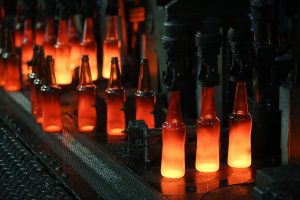There is an old adage in manufacturing that says between time, budget and quality – you can only pick two. For years that was true. Someone who needed an order to be processed fast had to choose between quality or a high production budget to meet this requirement. Likewise, someone who was looking to increase product quality needed to make tough decisions over time or budget to meet that need. You get the idea, manufacturing was all about choices. So it is a rare solution that lets you have it all.
Power solutions can address cost management, safety and quality
But, today’s power solutions are helping semiconductor manufacturers cut costs while improving both safety and quality. Such power solutions are critical to the semiconductor industry because the market dynamics are driven by a single constant – the cost of a chip to do work always declines. That can be seen in the price of a transistor. Over the decades, the cost of a transistor, the basic building block of integrated circuits (ICs), has fallen by a factor of 10 billion, from $10 to a billionth of a dollar.
Historically, advances in manufacturing were the driver for these cost savings, but lately there have been signs that the rate of cost reduction is slowing. While experts expect the price of a transistor to continue to decline in the future, alternative approaches need to be identified and deployed.
That is where today’s power solutions come in. They are composed of a combination of the right technology and application expertise, such as knowing where to put in an uninterruptible power supply (UPS), what characteristics it should have, and how to configure it. And, unlike traditional manufacturing improvements, power solutions can address cost concerns while at the same time improving safety and quality.
A deeper look at each of the challenges of cost, quality and safety reveals an interesting and often overlooked connection that makes this possible. So, before we look at the solution, it helps to have a clearer picture of the challenges.
- Cost – as illustrated above, the price of transistors has dropped steeply. At odds with this price decline is the expense of the latest processing equipment. This cost can run over $100 million for each tool, far higher than previous generations of similar equipment. That makes continuing cost reductions harder to achieve.
- Safety – semiconductor manufacturing involves high temperatures, toxic gases, caustic liquids, electricity, robotic devices, and other potential hazards to personnel and the environment. Exposure can come about because safeguards fail or tools malfunction, which can happen due to a power glitch or failure. Ensuring safety is paramount and strictly regulated in many places around the world.
- Quality – the making of an IC requires hundreds of steps, many of which require the use of complicated equipment carrying out extremely precise – as in down to nanometer tolerances – operations. Get any of those steps wrong and chip quality suffers – perhaps to the point of the device not working at all. A power failure or glitch can degrade the performance of or even spoil semiconductors in the making.
As this shows, safety and quality aren’t separated from cost. In fact, protecting workers and ensuring quality can help reduce the expense of chip production. Higher quality means less product is downgraded or scrapped, and more inventory makes it out the door. That cuts the cost per chip. As for safety, improvements in this area also benefits the bottom line, in the form of lower insurance, legal, and recruiting costs.
Now, let’s talk about how a power solution improves all three aspects. First, the potential savings from an energy solution is large because one of the biggest operating costs in semiconductor manufacturing is electricity. It can, for example, account for up to 30 percent of the operating expenses for a wafer fabrication plant in some locations.
So, making energy usage more efficient can pay off in meeting the cost challenge. Our experience with integrated solutions with a complete electrical system, power monitoring and a resilient architecture shows this approach can save up to 30 percent on operating energy costs.
Part of this solution ensures power availability with a UPS of the right size and characteristics. A wafer transfer system, for instance, might have a single-phase UPS as low as 1 kVA while a furnace might have a 3-phase system rated at up to 500 kVA.
When done comprehensively, that greater power availability reduces costs while at the same time improving both safety and quality. Safety gains happen because power glitches don’t knock out critical safeguards, exposing workers to toxic gases or hot materials. Quality increases because power faults don’t cause equipment to reset, thereby endangering the calibration of sensitive equipment or subjecting chips in-process to large temperature swings.
So, the proper power solution can help meet challenges of cost, safety and quality. That, in turn, will help semiconductors to continue to do more for less in the future. For more information on semiconductor critical power solutions, click here.
Discover the semiconductor fabrication efficiency eGuide
Semiconductor manufacturers can discover how to leverage power solutions to cut costs while improving both safety and quality by downloading this complimentary eGuide, “Innovative Power Solutions for Semiconductor Fabrication Efficiency.”



